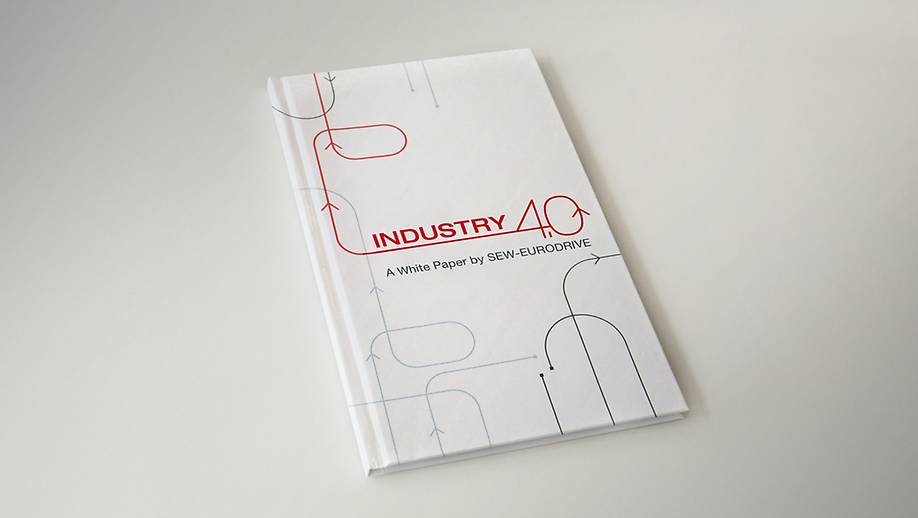-
The employee as "director of the value creation chain"
Industry 4.0 is changing the role of humans in the overall processes. New areas of work are being created in which the production processes flow together. Humans and robots work hand in hand in the future. And this process is intensifying all the time, with both sides increasingly converging to form a single team.
Industry 4.0 has been a beacon of hope for Germany for several years. In the process of realigning the project, there are increasing calls to go beyond political sound bites, issues of principle and definitions and in particular to see evidence of the feasibility and implementation of visions in real production scenarios that pay dividends.
At the same time, there are louder calls for Industry 4.0 to focus more strongly on people. The two elements can be harmonized by basing practicable and value-oriented concepts of "Lean" Industry 4.0 directly on interaction between humans and machines.
The individual order finds its way autonomously through the factory which further relieves the employees’ workload. The employees on site can fully concentrate on their tasks while the director of value creation must have an overview of his area.
The smart order combines production, assembly and logistics steps and recognizes all options needed to manufacture a product. It virtually reproduces the development stage of the product and, if required, controls work instructions for individual products.
In addition, the smart order checks the availability of resources for the next steps and then transmits them to the location, while transferring the task to be completed to the parties involved in the process. The complete order flow and feedback of the steps are visible in the chat.
More than just new technology: New production with the focus on humans
One thing here is particularly important – Technology is not just an end in itself but a basis for Industry 4.0. In the future, the real and virtual worlds will merge and be fully networked with one another. This development will enable completely new forms of production and collaboration.
What's new about this approach is that it isn't just machines and integrated systems that will communicate with one another. In Industry 4.0, all systems will be intelligently networked and will also exchange real-time information with the products being manufactured (naturally including humans!).
Lean Industry 4.0 will combine the "new" concepts of Industry 4.0 with the established principles of lean management and thus enable new collaboration between humans, machines and products, with the focus on humans and their value creation!
And what's the result of thinking so comprehensively about new forms of production / the factory of the future? Lots will change, but not everything. Just as before, companies will need a solid foundation in the future, too. Nonetheless, Industry 4.0 and all it involves can only actually be realized if we have fault-free, seamless automation in all processes and use this to achieve high levels of availability.
This is where companies have to do their homework. Due to the many dependent variables in the networked factory, this is no mean feat. The established cornerstones of value creation, value-stream orientation, avoiding malfunctions and errors, and efficient leadership thus need to be strengthened and enhanced with intelligent automation solutions. The challenge that has to be overcome here is to combine humans, technology and IT intelligently in the work environment in such a way that optimum value creation is ensured.
What does this mean for people and work in Industry 4.0?
These Industry 4.0 scenarios, which put people at the heart of operations, represent a qualitative improvement for employees:
- The mobile assembly assistant becomes a CPS and applies all order information.
- Employees are provided with support in carrying out their activities / key information is communicated to them (augmented reality).
- Employees are evolving from being mere assembly workers to controllers and regulators of networked production elements.
- Innovative IT-based assistance systems foster creativity and learning.
- A workflow that supports the acceptance, performance, development, health and well-being of employees.
New collaboration between humans and machines
Humans and robots thus work hand in hand, and this process is intensifying all the time, with both sides increasingly converging to form a single team. Gesture recognition creates completely new opportunities for intuitive operation in human-robot collaboration. People will be able to use simple gestures to influence the progress of a process depending on the situation.
The robot's program sequence can thus be influenced purely by gesture control through touch, pressure or motion. The operator can request various parts, which the robot then collects from a number of storage facilities and installs. Tasks can therefore be shared between people and machines appropriately, with humans performing tasks that require cognitive skills.
For example, the robot can hand parts to the operator in the factory for quality control at various levels in an ergonomically optimum process. The system in a research campus shows that this vision may soon become a reality. Mobile assistance systems can be controlled contactlessly using gesture recognition and provide support for people in their immediate working environments.


